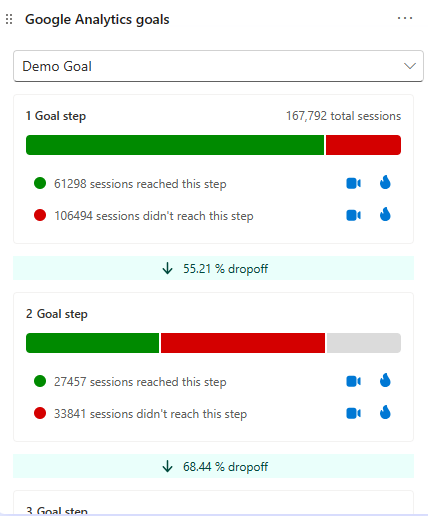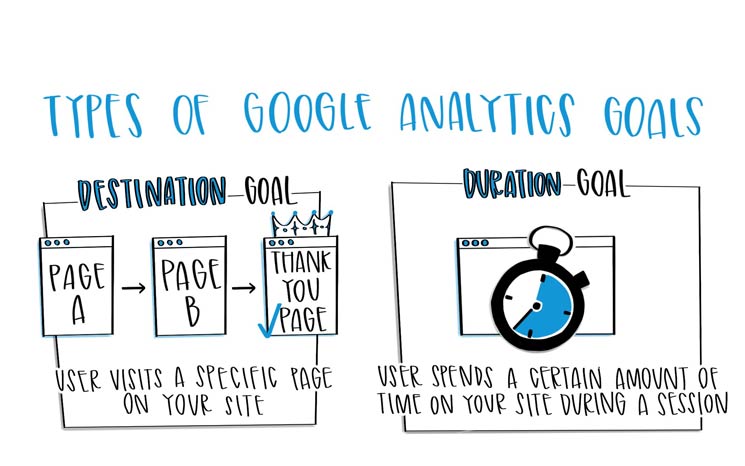Discover the Limitations of Google Analytics Goals: Unveiling the Information Kind That Remain Untrackable
As companies significantly depend on data-driven decision-making, understanding the limitations of devices like Google Analytics comes to be critical. While Google Analytics Goals offer valuable understandings into user interactions, there exist data types that elude monitoring, posturing difficulties to a comprehensive understanding of customer habits.
Insufficient Customer Journey Tracking
Insufficient individual journey tracking within Google Analytics can impede the capability to precisely evaluate individual actions. When the customer journey is not totally tracked, there are voids in the information that prevent a thorough understanding of just how users connect with an internet site. This lack of insight can lead to missed out on chances for optimization and renovations to the customer experience.
One typical issue with insufficient individual trip monitoring is the failure to see the full path that individuals take in the past completing an objective or leaving the site. Without this info, it is challenging to recognize where customers may be encountering obstacles or friction factors that prevent them from converting. In addition, incomplete monitoring can cover the influence of certain advertising efforts or web site changes on user actions.
To resolve this limitation, it is essential to establish up appropriate tracking mechanisms within Google Analytics to capture the entire customer trip. This may include setting up event tracking, goal funnels, or utilizing tools like Google Tag Supervisor to guarantee that no crucial communications go unrecorded. By gaining a detailed view of the customer trip, website proprietors can make even more educated choices to improve user engagement and drive conversions.
Attribution Obstacles
Navigating via attribution challenges in Google Analytics requires a comprehensive understanding of how different touchpoints add to the total conversion process. Acknowledgment difficulties develop from the intricacy of contemporary consumer trips, where users communicate with multiple channels prior to converting. Google Analytics supplies numerous acknowledgment models like first touch, last touch, and direct, each offering a various point of view on exactly how credit score is assigned to touchpoints along the conversion path. These designs might not constantly properly mirror the real influence of each touchpoint on the conversion.
One typical attribution challenge is the problem in connecting conversions to the right resource, specifically in cases where customers communicate with multiple networks prior to converting. This can cause mistakes in determining which advertising and marketing efforts are driving one of the most conversions. Furthermore, cross-device monitoring presents one more attribution difficulty, as customers typically change in between tools during their journey, making it testing to track their interactions seamlessly. Marketers must meticulously analyze and translate acknowledgment information to make educated decisions and optimize their advertising and marketing methods effectively.
Offline Conversions
Offered the challenges connected with associating conversions accurately in online channels, the dimension of offline conversions offers a considerable possibility for marketers seeking a much more comprehensive understanding of their consumers' trip. Offline conversions describe actions that clients absorb the real world, such as making acquisitions in brick-and-mortar stores or over the phone, attending occasions, or involving with printed materials - what data is google analytics goals unable to track. These conversions are critical for services that operate both online and offline, as they offer valuable understandings right into the efficiency of marketing projects throughout numerous touchpoints
Tracking offline conversions traditionally positioned a substantial obstacle for marketing professionals, as it was challenging to connect these actions back to certain on-line communications precisely. With improvements in technology, such as the combination of CRM systems, distinct identifiers, and coupon codes, organizations can currently connect the gap between online and offline data to gain an extra alternative sight of consumer habits. By successfully gauging offline conversions, online marketers can optimize their approaches, allot resources a lot more successfully, and inevitably improve the total client experience.
Cross-Device Tracking
Cross-device tracking plays a vital role in recognizing the interconnected nature of consumers' electronic communications across multiple gadgets. In today's omnichannel globe, where individuals seamlessly change in between desktop computers, mobile phones, and tablet computers, tracking their habits throughout these tools is necessary for marketing experts to get a detailed view of their customer trip.

Moreover, personal privacy worries and policies such as GDPR important site and CCPA have better challenging cross-device monitoring. With users requiring more control over their data and enhanced restrictions on tracking innovations, online marketers should find privacy-compliant and innovative ways to attach individual communications throughout tools.
Dynamic Material Involvement
Understanding user interaction with dynamic material is critical in enhancing electronic advertising methods for improved target market interaction. Dynamic web content refers to website elements that alter based upon user habits, choices, or other factors, using a personalized experience. However, tracking customer communications with vibrant content positions difficulties for typical analytics tools like Google Analytics.
While Google Analytics can track standard interactions like clicks and web page sights, it may have a hard time to record more nuanced involvements within vibrant content. what data is google analytics goals unable to track. Metrics such as time invested in specific vibrant aspects, float activities, or interactions within pop-ups are frequently not conveniently quantifiable using conventional monitoring approaches. This limitation impedes marketing experts' capacity to completely comprehend just how customers are engaging with dynamic content and tailor their strategies appropriately

Verdict
To conclude, Google Analytics goals have constraints in tracking incomplete customer trips, associating conversions properly, capturing offline conversions, tracking cross-device communications, and measuring vibrant material involvement. These restraints highlight read review the significance of exploring extra monitoring approaches and devices to get a much more detailed understanding of user habits and conversions past what Google Analytics can supply.
While Google Analytics Goals offer important understandings into user interactions, there exist data types that avoid tracking, posturing obstacles to an extensive understanding of individual habits.Insufficient customer trip tracking within Google Analytics can impede the capacity to properly analyze individual actions. When the user journey is not completely tracked, there are gaps in the information that stop a comprehensive understanding of just how individuals communicate with a site.One usual problem with insufficient customer trip monitoring is the lack of ability to see the complete course that users take previously completing a goal or leaving the site. By acquiring an extensive view of the individual journey, web site proprietors can make more informed decisions to improve individual interaction and drive conversions.
Comments on “Figure out What Data Is Google Analytics Goals Unable to Track”